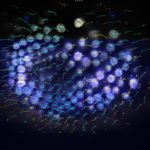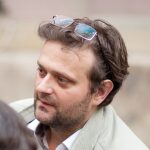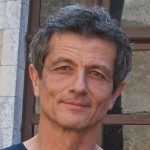Link to Pubmed [PMID] – 30132756
Link to DOI – 10.7554/eLife.37355e37355
Elife 2018 08; 7():
Hematopoiesis leads to the formation of blood and immune cells. Hematopoietic stem cells emerge during development, from vascular components, via a process called the endothelial-to-hematopoietic transition (EHT). Here, we reveal essential biomechanical features of the EHT, using the zebrafish embryo imaged at unprecedented spatio-temporal resolution and an algorithm to unwrap the aorta into 2D-cartography. We show that the transition involves anisotropic contraction along the antero-posterior axis, with heterogenous organization of contractile circumferential actomyosin. The biomechanics of the contraction is oscillatory, with unusually long periods in comparison to other apical constriction mechanisms described so far in morphogenesis, and is supported by the anisotropic reinforcement of junctional contacts. Finally, we show that abrogation of blood flow impairs the actin cytoskeleton, the morphodynamics of EHT cells, and the orientation of the emergence. Overall, our results underline the peculiarities of the EHT biomechanics and the influence of the mechanical forces exerted by blood flow.





